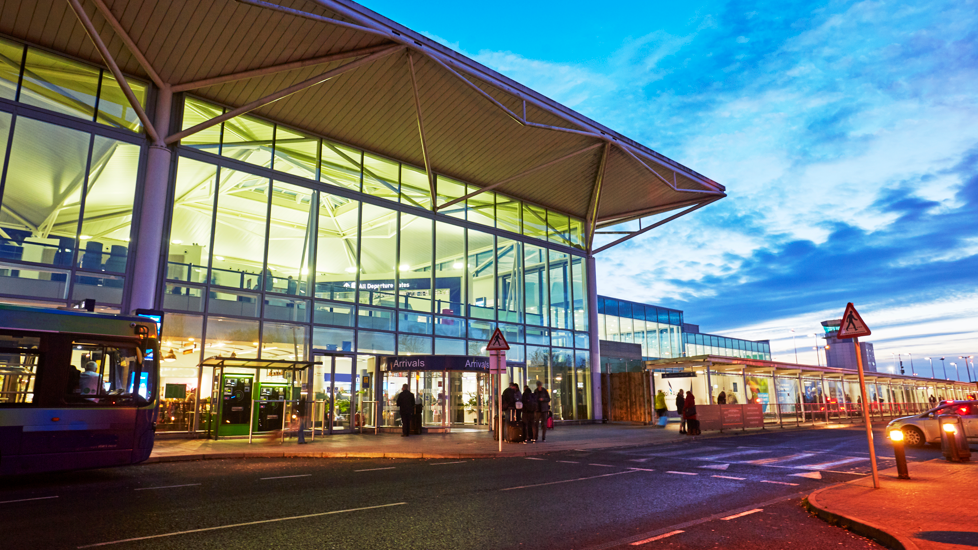New emergency response vehicle arrives at airport
Bristol Airport’s new state-of-the-art fire engine
- Published
Bristol Airport has invested in a new state-of-the-art emergency response vehicle.
The Oshkosh Striker ARFF is packed with the latest high-tech equipment and will be based at the large tender bay at the edge of the airstrip.
Although weighing 39-tonnes it has a top speed of 72 mph - which Fire Station Manager Ian Spiller says is crucial.
"The airport is like a fenced city and we have to be anywhere on the airfield within two minutes and not exceeding three – so speed is of the essence."
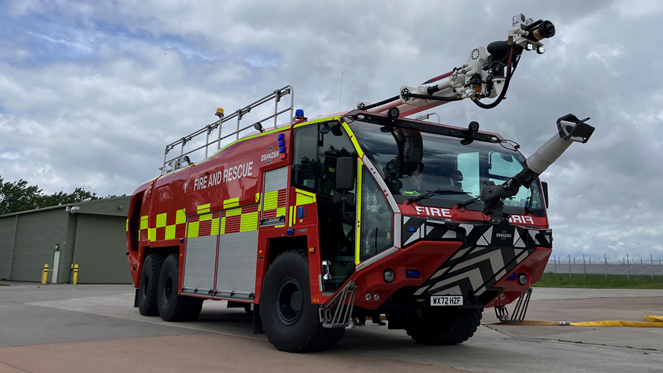
The Oshkosh Striker ARF is made in America and sold worldwide
The fire engine can carry 12,000 litres of water, 1,700 litres of foam and also holds a dry powder system meaning it can fight many different types of blaze.
On its roof is a large distinctive 'snozzle' - similar to that found on a garden sprinkler - which is attached to an extendable arm.
The tip can pierce through an aircraft's fuselage and precisely target a fire with foam or water.
In an emergency this could be done while passengers are still evacuating the plane to create a safer environment on board.
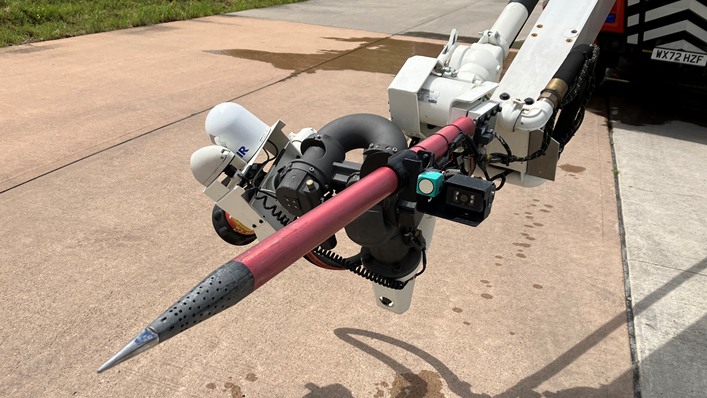
The special 'snozzle' can pierce a plane's fuselage to deliver water or foam
Firefighter Jordan Spear, who's been trained to drive the new vehicle, said it is a welcome addition to the fleet: "It's an amazing bit of kit - the technology is second-to-none - much better than the older trucks we used to have, it's top of the range."
The vehicle comes compete with an infra-red imaging camera, spotlights, ladders and many additional on-board tools to tackle a range of emergencies.
By law every UK airport with fare-paying passengers has to provide a resident fire service.
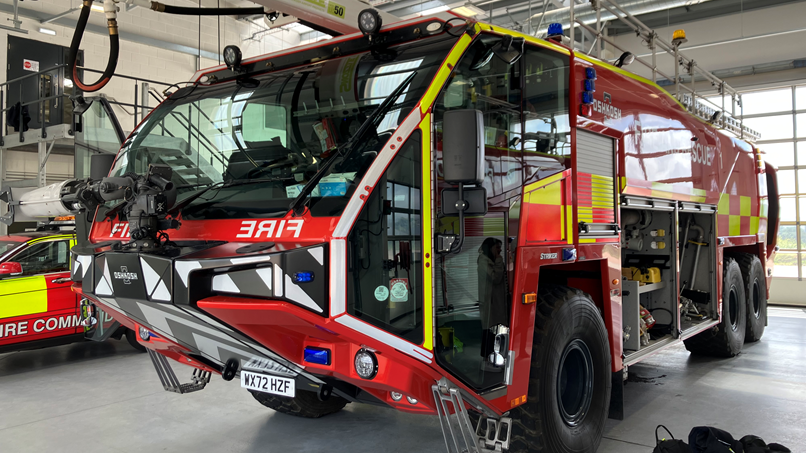
The new vehicle joins an impressive fleet based at the airport's new tender bay
Related topics
- Published2 May
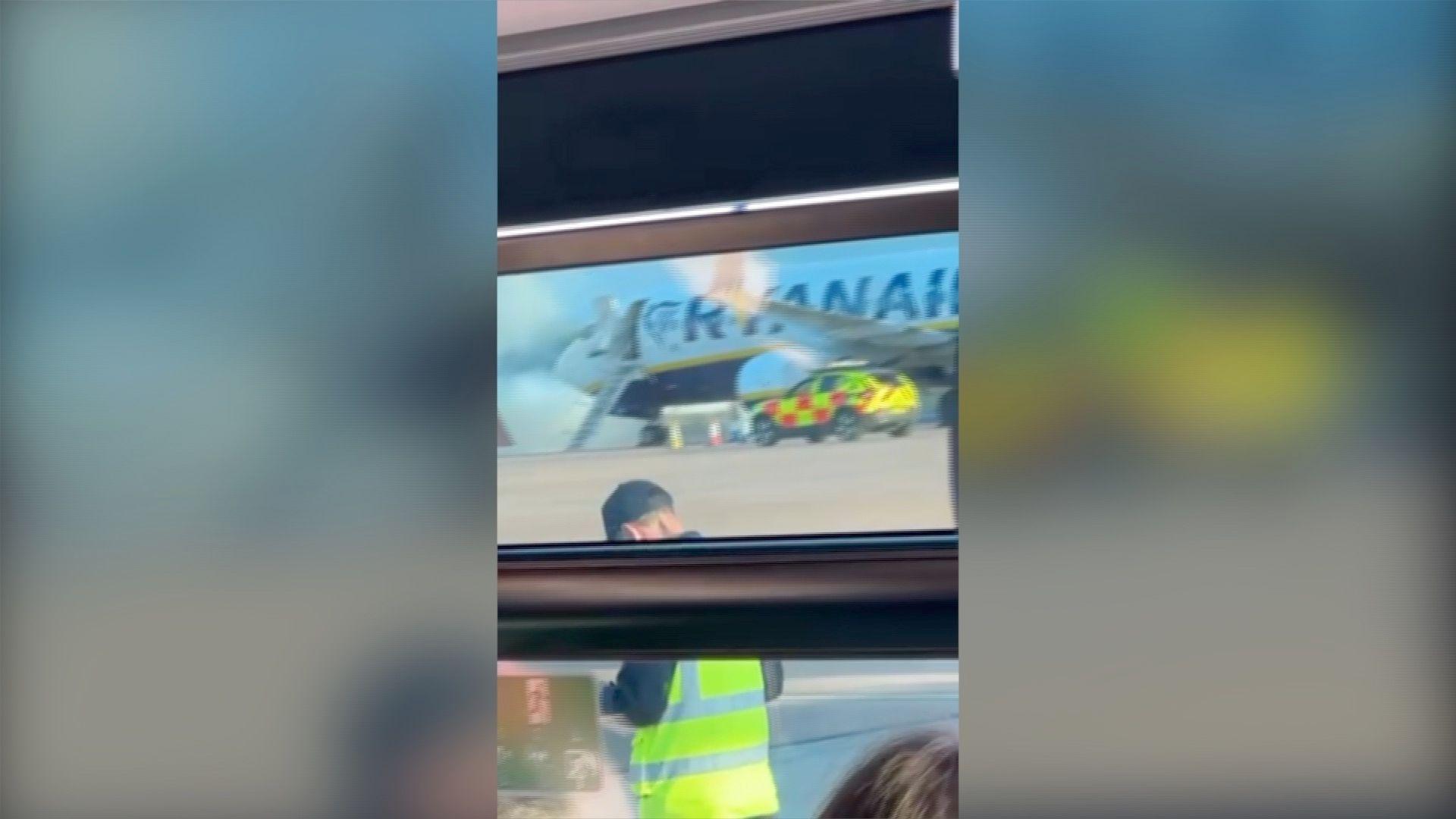
- Published11 March
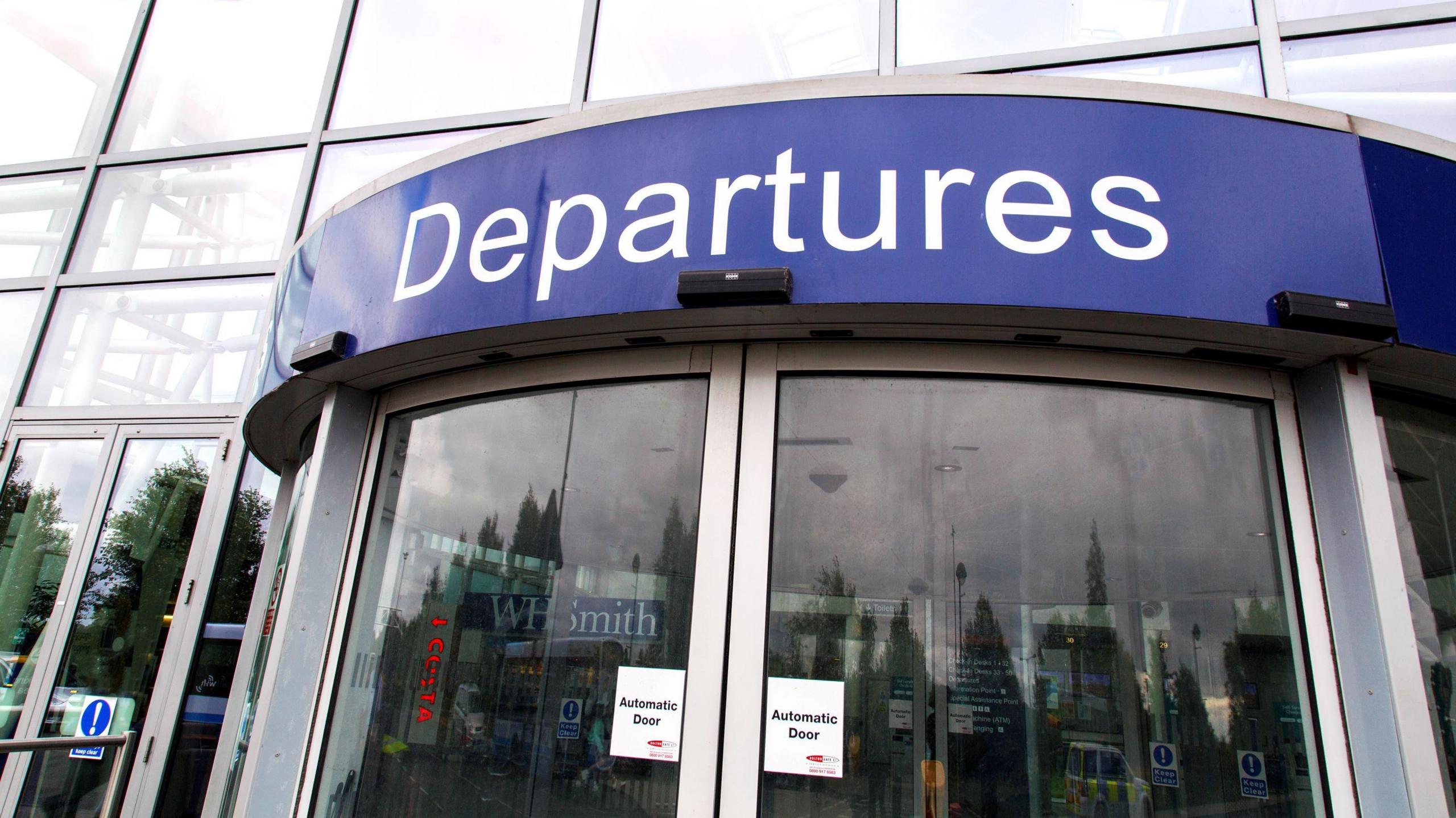
- Published27 February
